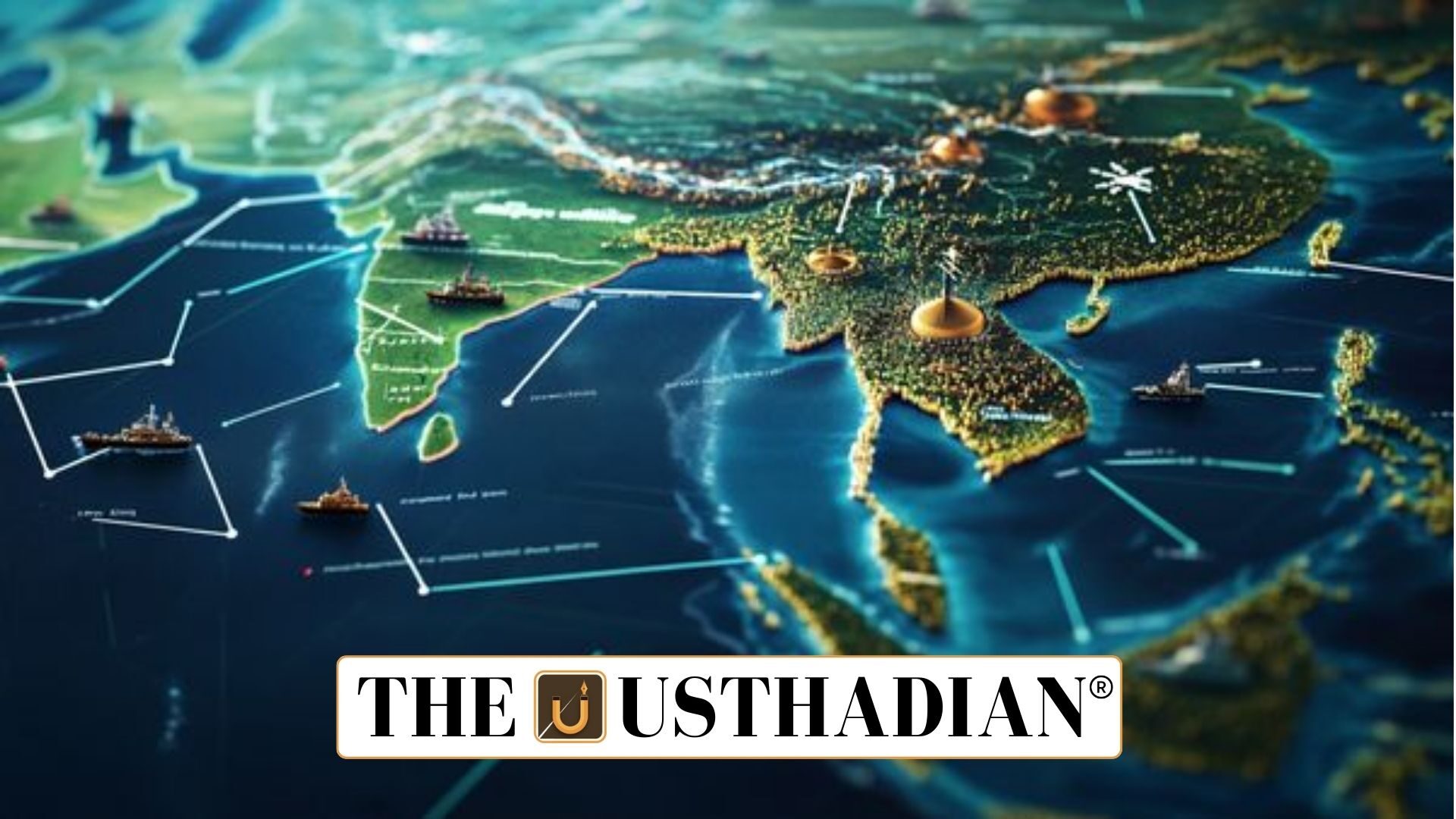Strategic significance of the Indian Ocean Region
India’s Strategic Roadmap in the Indian Ocean Region: The Indian Ocean Region (IOR) is one of the most critical maritime spaces in global geopolitics. India, with its 11,098.81 km coastline, 1,300 islands, and a 2.4 million sq. km Exclusive Economic Zone (EEZ), enjoys a commanding presence in the region.
Static GK fact: The IOR is the third-largest ocean, with 35 littoral states housing one-third of the world’s population.
Economic lifeline for India and the world
The IOR is a major conduit for global trade and energy flows. Nearly 90% of India’s trade and most of its oil imports pass through these waters. Globally, the IOR accounts for 50% of container traffic, one-third of bulk cargo, and two-thirds of oil shipments.
Static GK fact: The IOR hosts some of the busiest shipping lanes like the Strait of Malacca and Bab el-Mandeb.
Ecological value of the IOR
The IOR is the warmest of the world’s oceans, making it ecologically dynamic and biologically productive. This creates both opportunities for fisheries and marine biodiversity, and challenges from climate change, coral bleaching, and overfishing.
Geopolitical and security challenges
The region faces growing Chinese influence through port investments, the Belt and Road Initiative (BRI), and the String of Pearls strategy. China’s military base in Djibouti and deepening ties with Pakistan pose strategic concerns for India.
Maritime security is further threatened by piracy, terrorism, Illegal, Unreported, and Unregulated (IUU) fishing, smuggling, and drug trafficking.
Infrastructure gaps in IOR states
Many small island and coastal nations in the IOR lack modern port facilities, maritime surveillance systems, and resilient infrastructure. This creates vulnerabilities in trade, disaster response, and security cooperation.
Key recommendations from the Parliamentary Committee
The Parliamentary Committee on External Affairs suggests transforming SAGAR (Security and Growth for All in the Region) into MAHASAGAR, with a focus on sustainability, trade, and mutual security.
It also recommends deepening multilateral engagement through Quad, IORA, and BIMSTEC, boosting diaspora ties, and strengthening cultural diplomacy.
Promoting a rules-based maritime order under UNCLOS and ensuring ASEAN centrality in Indo-Pacific governance are also seen as critical to India’s long-term security.
Static Usthadian Current Affairs Table
India’s Strategic Roadmap in the Indian Ocean Region:
| Topic | Detail |
| Report title | Evaluation of India’s Indian Ocean Strategy (IOR) |
| Presented in | Lok Sabha |
| India’s coastline length | 11,098.81 km |
| Number of Indian islands | Around 1,300 |
| India’s EEZ size | 2.4 million sq. km |
| IOR global ranking | 3rd largest ocean |
| Littoral states | 35 |
| Share of world population | One-third |
| Share of India’s trade via IOR | 90% |
| Key global shipping share | 50% container traffic, 1/3 bulk cargo, 2/3 oil shipments |
| Key Chinese presence | Djibouti base, BRI, String of Pearls |
| Maritime threats | Piracy, terrorism, IUU fishing, smuggling, drug trafficking |
| Key initiative | Upgrade SAGAR to MAHASAGAR |
| Focus areas of MAHASAGAR | Sustainability, trade, mutual security |
| Multilateral partners | Quad, IORA, BIMSTEC |
| Governance principle | Rules-based maritime order |
| Legal framework supported | UNCLOS |
| Regional governance focus | ASEAN centrality |
| Ecological feature | Warmest ocean, biologically productive |
| Major trade chokepoints | Strait of Malacca, Bab el-Mandeb |








